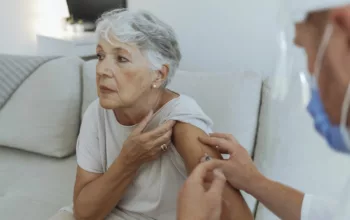5 Recent Developments Contributing to Vaccine R&D
This was originally published on Innovation.org on Tuesday, 26 May, 2020.
Throughout recent history, vaccines represent the most impactful public health advance, helping to prevent the spread of infectious diseases and, in many places, eliminating some of the most devastating conditions. As communities around the world continue to grapple with the impact of COVID-19, vaccines and what they can do for human health have once again come to the forefront as a critical health care tool.
Much attention has been given to the speed at which biopharmaceutical researchers are working to identify and develop safe and effective vaccines against the coronavirus. The first clinical trial for a potential vaccine identified by a biopharmaceutical company was initiated less than three months after the first reported case.
Behind this rapid progress are advances in technology and understanding about the nature of the immune system, which have allowed us to more rapidly respond to the current pandemic compared to previous episodes.
Here Are Five Recent Developments Contributing To Our Progress In Vaccine R&D:
Faster sequencing: When evidence of a new virus is detected, scientists work to isolate and identify the specific virus in question. Once isolated, scientists can attempt to rapidly sequence the unique genetic code of the new virus, which provides information needed to help design diagnostic tests and potential vaccines and treatments. In 2003, using the tools available at the time, it took several months after the discovery of SARS to sequence the full SARS-CoV-1 genetic code. Since then, sequencing technology has dramatically improved. Scientists circulated the genetic sequence of the novel coronavirus behind COVID-19 less than two weeks after the first reported case.
Synthetic generation: To investigate a virus, scientists previously required physical samples of the pathogen that were extracted from sick patients. Modern technology allows researchers to synthetically generate viral genetic material in the lab, so they can begin studying a virus’s properties earlier and faster.
Artificial Intelligence (AI): When developing a new medicine, scientists must sort through thousands of potential compounds and treatments to find the few that could be viable. The process can be incredibly tedious. Scientists have just begun using artificial intelligence to sort and analyze potential approaches to vaccine development far faster than any human team could achieve through informed trial-and-error. As technology improves, AI has the potential to improve the speed at which potential candidates are reviewed.
mRNA vaccines: Historically, vaccines work by introducing the body to a weakened or inactive pathogen, or part of a pathogen such as a piece of genetic code, so the body can learn to recognize the pathogen and build immunity. The immune system does this by learning to recognize antigens, which are parts of the pathogen—often proteins on the surface of a bacterium or virus—which indicate the organism is foreign. Rather than introduce viral material, mRNA vaccines work by providing the genetic instructions to produce an antigen. Once the body starts producing these antigens, the immune system can learn to recognize them and build immunity. mRNA vaccines have the potential to help tackle diseases that have been previously hard to vaccinate against, and they can be more easily manufactured than traditional vaccines.
DNA vaccines: DNA vaccines operate similarly to mRNA vaccines in that they contain the genetic information required to produce a specific antigen. Additionally, these vaccines may contain other ingredients that help the DNA enter cells, direct the DNA to enter the correct cells, or boost the immune response. Also, like mRNA vaccines, they can be manufactured more easily than traditional vaccines.
Currently, there are no approved vaccines for the prevention of COVID-19, but multiple biopharmaceutical companies are moving very quickly taking different approaches to developing safe and effective vaccines, based on deep scientific expertise developed over the years from past experience with diseases like Ebola and SARS.
Learn more about the efforts underway to develop solutions to help diagnose, treat and prevent COVID-19.





